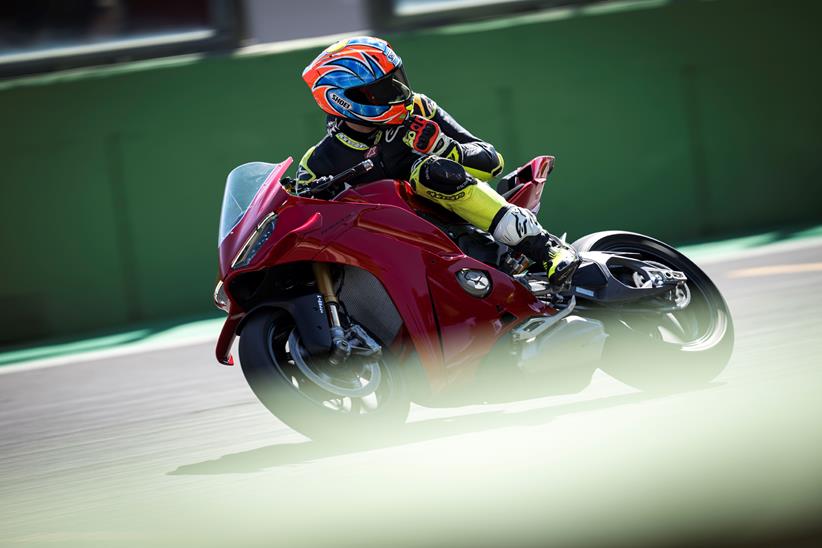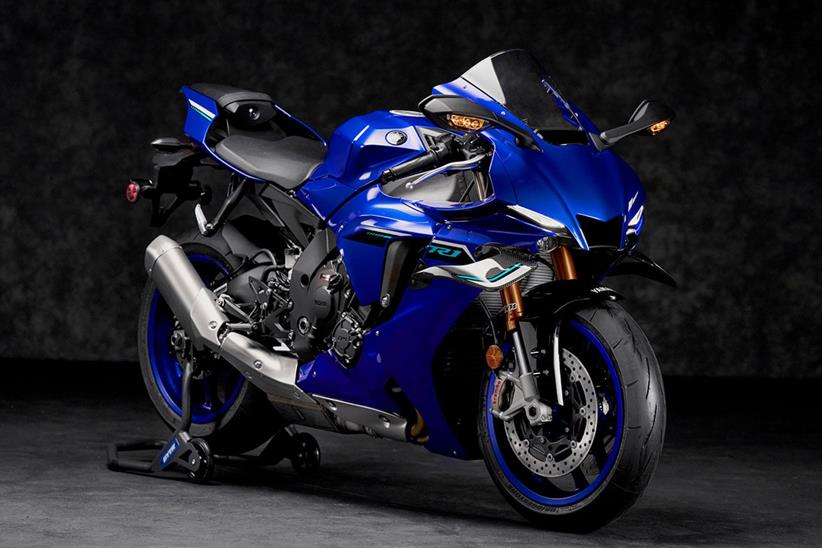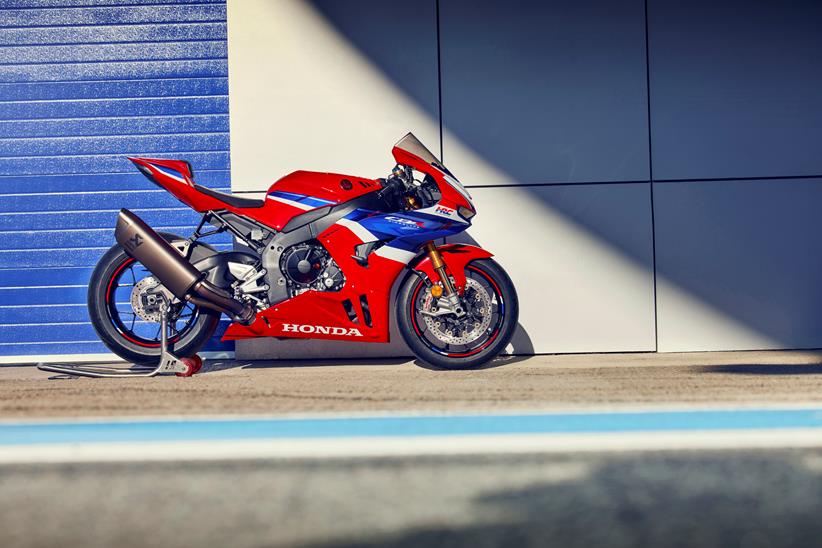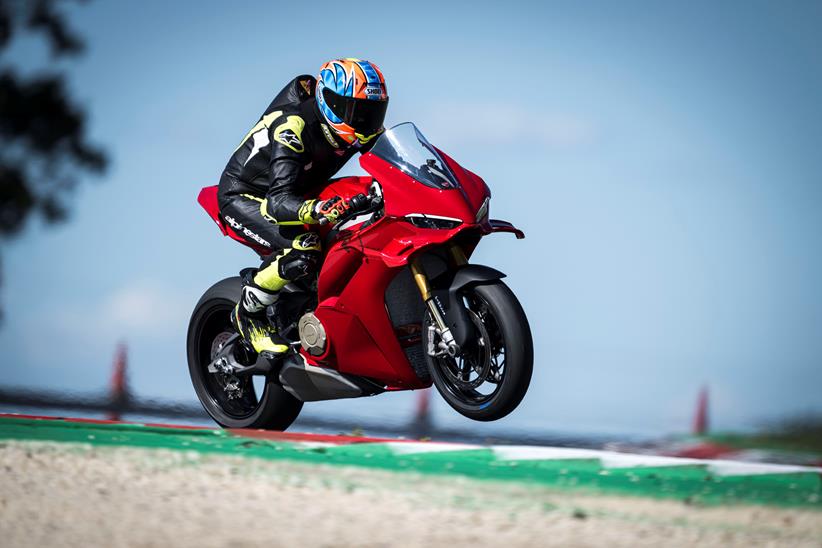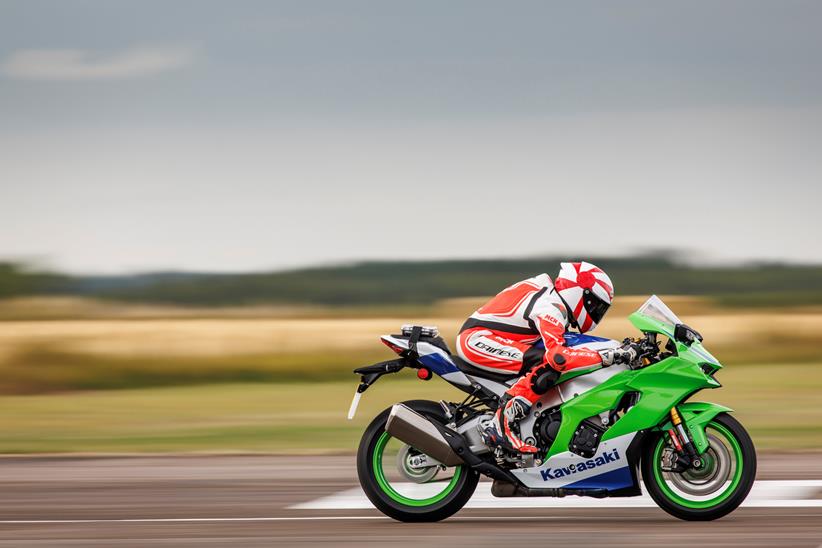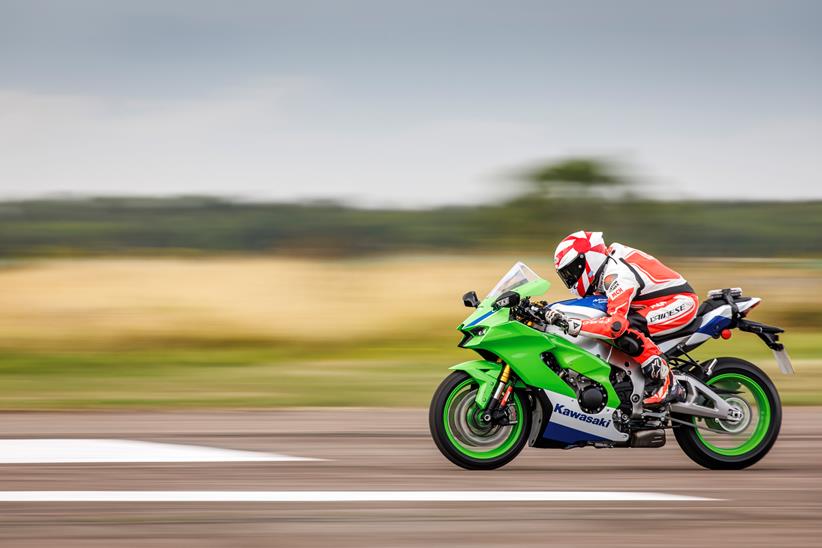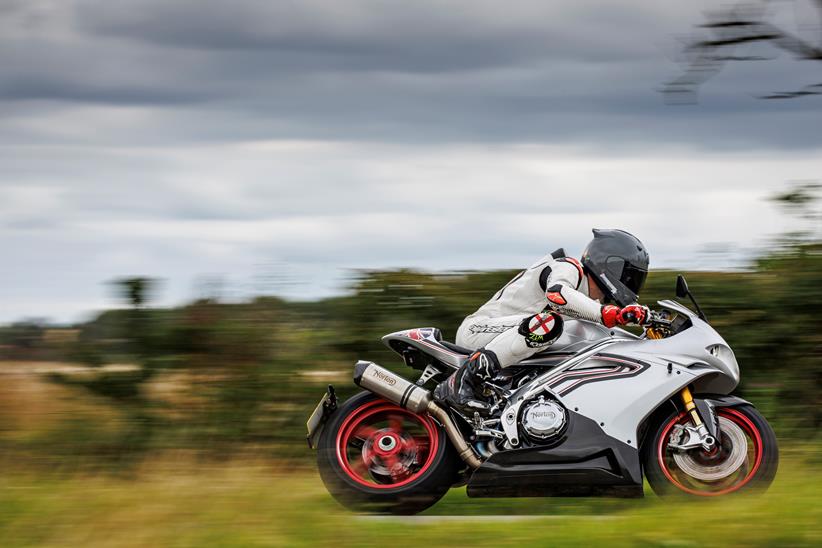Our list of the best superbikes of 2025 so far will have you searching for your piggybank
Superbikes have always been the ultimate expression of two-wheeled nirvana, with speed, technology, and adrenaline-pumping excitement in equal measures.
Every year we look ahead at the release of new or updated motorbikes to provide you with our industry-leading insight, and furthermore hoping we win big on a lucky scratch card in order to snap up a few of them ourselves.
Furthermore, we’ve had the privilege of riding most of these bikes’ earlier iterations, so we’re now looking at what the 2025 models have to offer.
We’ve put together this speculative list of the best superbikes you can buy in 2025, based on early teasers, technical specs, and industry insight. It’ll be updated as new models are announced and again when we’ve ridden them.
Featuring groundbreaking aerodynamics and even more intelligent electronics, this year’s superbikes promise to push the boundaries of performance further than ever.
Whether you’re a track-day junkie or someone who simply loves the thrill of raw power on two wheels, read below what we think the top superbikes of 2025 are.
Jump to:
- Ducati Panigale V4S
- BMW S1000RR
- Aprilia RSV4
- Honda CBR1000RR-R Fireblade SP
- Kawasaki Ninja ZX-10R
- Norton V4SV
New superbikes available outside the UK
1. 2025-on Ducati Panigale V4 S

The boys and girls of Bologna have managed to build upon an already incredible motorcycle, and shove it well and truly into the next generation of superbike. Featuring a refined Desmosedici Stradale engine and futuristic predictive electronics, this masterpiece is raw power, tamed. Few bikes embody the passion and performance of Italian engineering quite like the 2025 Ducati Panigale V4S.
Having already tested this bike on track, we know that it’s is an absolute weapon and worthy of being our number one superbike for 2025 so far.
- Highlights: Lighter, more flexible frame and double sided swingarm / Polished new electronics for more refined rider aids / Linked brakes automatically trails rear into corners
- Specs: Engine size 1103cc / Power 213bhp / Weight 187kg (dry) / Seat height 850mm
- Price: £29,995 | buy from here
Review snapshot:
With the outgoing 2024 V4S already a much-loved model with big power and high spec equipment, it speaks volumes that the revised 2025 Panigale is heaps improved. Our chief road tester Michael Neeves rated the new Panigale five stars.
“With its flexy new frame, even more advanced electronics, clever braking system and a raft of detail upgrades Ducati’s new Panigale V4S has evolved into an ultra-polished track weapon”.
The new Panigale is equipped with Ducati Vehicle Observer (DVO), the most advanced electronics package on a superbike yet. With jaw dropping aesthetics and blistering speed, Ducati’s flagship sets the gold standard for modern superbikes. Read more in our in-depth 2025 Ducati Panigale V4S review.
Interested in this bike? Find Ducati Panigale V4 S for sale.
2. 2025-on BMW S1000RR
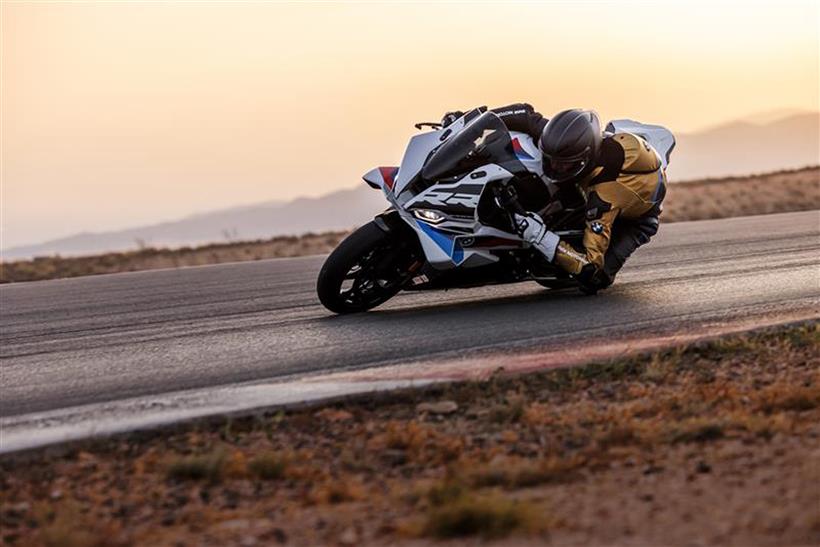
The 2025 BMW S1000RR further improves on the already updated 2024 model, with a host of additions designed to keep it at the sharp end of the superbike market.
Still delivering an eye-watering 207bhp from its Euro 5+ engine, the S1000RR continues to be a benchmark of German precision engineering.
With larger wings and more riding modes as standard for 2025, the already superb RR gets a few choice upgrades and lands as number two on our list.
BMW also have the WSBK homologated M1000RR, with even more power and outlandish aero. It’s the reigning WSBK Championship-winning bike going into 2025 but as it’s more exclusive and certainly more expensive (just under £15,000 more) than the very similar S1000RR – it doesn’t feature on our list but gets an honourable mention. Read MCN’s review on the BMW M1000RR to find out more.
- Highlights: Clever integrated brake cooling ducts / Significantly higher downforce / Shorter M quick-action throttle, Pro Riding Modes are now standard equipment
- Specs: Engine size 999cc / Power 207bhp / Weight 198kg (wet) / Seat height 832mm
- Price: From £17,990 | buy from here
Review snapshot:
As the 2025 model hasn’t been released at time of writing for anyone to test, below is a snapshot of our review of the 2024 S1000RR to give you a sense of how impressive the RR is already.
Receiving five stars from MCN road tester Michael Neeves. “BMW’s latest S1000RR superbike is tricker and more powerful than all its previous iterations. And yet through a host of performance, electronic, aerodynamic and chassis updates it’s also easier to ride than its older incarnations and main rivals.” Read more about Neevsey’s thoughts in the current BMW S1000RR review.
Interested in this bike? Find BMW S1000RR for sale.
3. 2025-on Aprilia RSV4
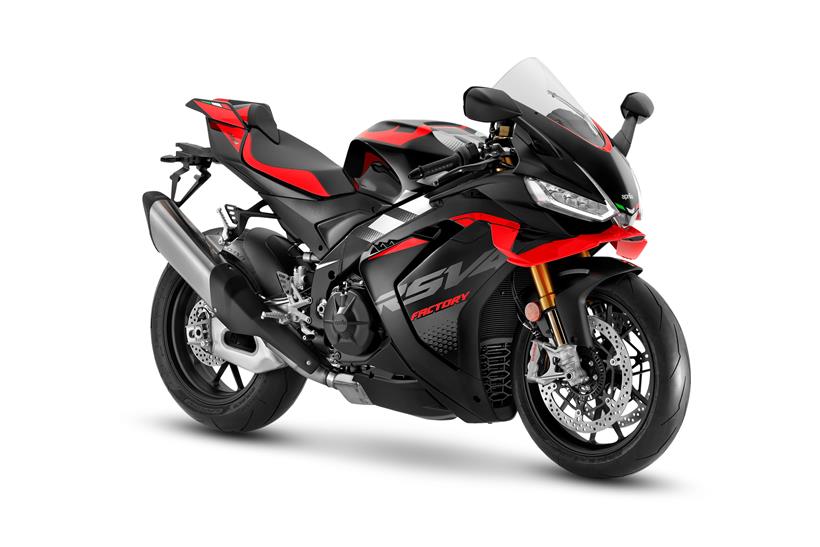
For 2025 the RSV4 can claim the title of the most powerful production superbike in the world, with a scorching output of 220hp.
Aprilia have also provided new front bodywork which is adapted from Aprilia’s RS-GP MotoGP bike, a new TFT display, and Brembo’s new Hypure brake calipers.
Also available in a Factory model with forged wheels and Öhlins Smart EC 2.0 suspension that now offers a GPS-managed corner-by-corner management system when ridden on track. This is something we’ve not seen available on a production bike, and it comes as standard on the Factory model.
We’ve always been impressed with the riding characteristics (and noise) of the RSV4, with the engine capacity growing in recent years and Aprilia continuing to pour more features and speed into the RSV4 cooking pot – it is still a strong showing from Noale and lands the bike as number three on our list.
- Highlights: Most powerful superbike in the world for 2025 / Powerful Brembo Hypure brake calipers / Refined with new predective electronics, backlit switchgear and a fuel level indicator
- Specs: Engine size 1099cc / Power 220hp / Weight 202kg (Wet) (Factory model) / Seat Height 845mm
- Price: To be confirmed | buy from here
Review snapshot:
We can’t wait to get our hands on it and see how the RSV4 has moved forwards for 2025. It’s bound to be more formidable with it’s new aero and record-breaking power output. You can check out a teaser of our review of the existing model below, which our chief road tester Michael Neeves rated five stars:
“Wailing like a MotoGP racer at full throttle the Aprilia still has a sumptuous ride, epic handling and more grip and braking power than a mere mortal will ever know what to do with.”
Read more about what our chief road tester had to say in our current Aprilia RSV4 Factory review.
Interested in this bike? Find Aprilia RSV4 for sale.
4. 2024-on Honda CBR1000RR-R Fireblade SP
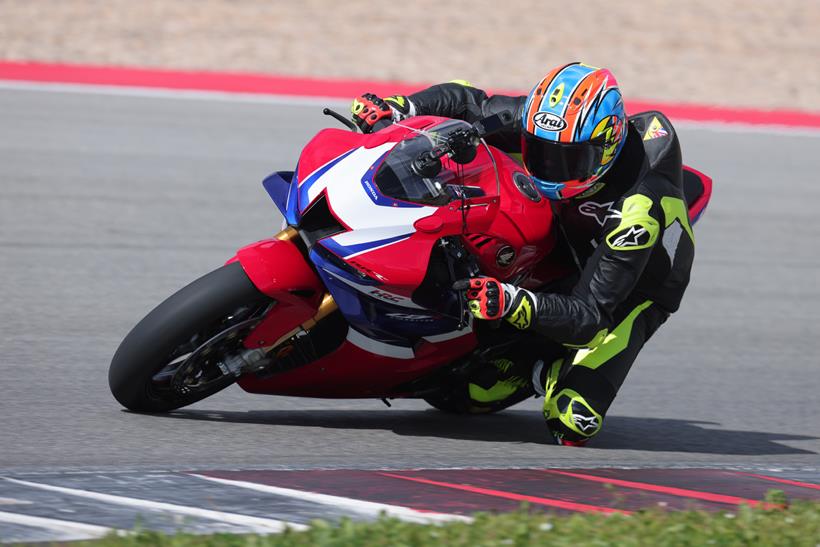
Honda hasn’t released any details on whether we’ll see an updated 2025 model of the fire breathing CBR10000RR-R SP, but the current 2024 model is still entirely relevant and one of the most impressive superbikes going into 2025.
Armed with a screaming inline-four engine and aerodynamics straight from the HRC lab, this Fireblade is nothing short of spectacular.
It’s number four on our list as it’s undeniably fast, super high quality in its finish and offers a confident high powered thrill which is sure to leave an impression.
- Highlights: Split throttle bodies for smoother power delivery / Uprated engine and gearbox / New-gen Öhlins suggests perfect preload settings
- Specs: Engine size 1000cc / Power 215bhp / Weight 201kg (wet) / Seat height 830mm
- Price: £23,499 | buy from here
Review snapshot:
The Honda CBR1000RR-R SP is still a strong contender from Japan, with semi-active Öhlins suspension and powerful Brembo brakes, the engine is also rampant with electronics that deliver a unique sound compared to other conventional inline-four superbikes. Our chief road tester Michael Neeves rated it five stars and said:
“From a pure entertainment point of view the unusual racket it makes when it accelerates out of a corner is magnificent. Its roomier riding position is far more pleasant if you’re tall and its clever new suspension takes all the guess work out of set-up.” Read more about the current Honda CBR1000RR-R SP review.
Interested in this bike? Find Honda CBR1000RR-R Fireblade SP for sale.
5. 2025-on Kawasaki Ninja ZX-10R
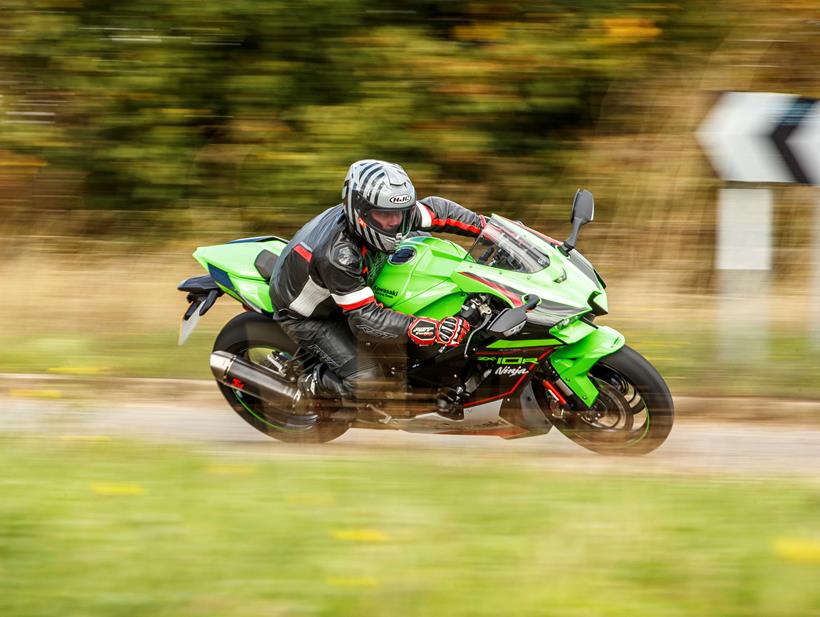
Finding itself towards the lower end of our list is the 2025 Kawasaki Ninja ZX-10R, which has slowly been working its way away from the sharp end of the class.
The latest Ninja is unchanged for 2025 but have no doubt, it’s still a fierce offering with 200bhp and hardware that matches up to some of it’s higher placed rivals.
Comparatively it lacks a little character and real world fun, the engine power is delivered right in the upper rev range without much to use when you are riding around at lower speeds or in higher gears.
The riding position is definitely track focused and cramped, which further reiterates Kawasaki’s intention that they’ve designed it more closely for track than they have in earlier generations.
With other superbikes on the market showing us that you can pair blistering track performance without being too compromised on the road, the Kawasaki finds itself as a bike that’s not class-leading on the road nor the racetrack.
Even Kawasaki’s ZX-10RR WSBK homologated model is near on the same performance out of the showroom, for a lot more money, and it lacks the appeal of the other homologation specials that are available. Realistically it’s only bought by people or teams with the intention of going racing, where many of the stock components are removed or exchanged anyway.
The formula Kawasaki have used may have worked previously but times have certainly moved on, so the 2025 ZX-10R is number five on our list.
- Highlights: Aerodynamic fairing with integrated winglets / Track focused ergonomics / TFT dash and cruise control
- Specs: Engine size 998cc / Power 200 bhp / Weight 207kg (wet) / Seat height 835mm
- Price: £17,499 | buy from here
Review snapshot:
The ZX-10R still remains as one of the most track focused superbikes, for better or worse. Our road tester rated it 4 stars.
“On track it remains brilliant and the electronic assists designed to help you go fast are hard to fault. On the road it is still compromised through a cramped riding position, the TFT dash isn’t that flash and the motor is still less gutsy and more top-endy than some rivals”.
This Ninja remains a force to be reckoned with, but other offerings are more fun, more advanced and faster. Read more in the current Kawasaki ZX-10R review.
Interested in this bike? Find Kawasaki Ninja ZX-10R for sale.
6. 2025-on Norton V4SV

A bit of an oddball choice, the Norton V4SV definitely encapsulates the meaning of ultra exclusive. It’s only approved for use in the UK and at £44,000, it’s not on everyone’s shortlist.
Dripping with quality components and with attention to detail that ensures its longevity as an attractive art piece, the V4SV differs greatly from the previous V4 SS and RR bikes, that came before the company changed hands to TVS Motor.
It’s a machine that rides well. However, in the presence of the other bikes in this list, it’s left well behind.
Despite being equipped with quality kit from Öhlins and Brembo (like some of the other bikes), plus a healthy quoted 185bhp from its V4 engine – the V4SV doesn’t excel on track and is more focused towards being an expensive art piece on the road.
- Highlights: Long-awaited replacement for the Norton V4 SS/RR models / Missing the top-end excitement of a 200hp superbike / Focus on road manners rather than track performance
- Specs: Engine size 1200cc / Power 185bhp / Weight 206kg (wet) / Seat height 830mm
- Price: £44,000 | buy from here
Review snapshot:
When we tested it, we said: “The V4SV’s performance isn’t bad, but it’s some way from being competitive. Rivals have anything up to 30 years continuous development in their flagship superbikes. Meanwhile, the current Norton team have spent just 18 months backtracking on an undeveloped first effort with critical issues.”
Norton’s first crack at making a genuine superbike doesn’t hit the mark when comparing to the rest of the market but it can be argued as a respectable attempt even if sales are not that high. With that said, it lands at number six in our list. Read more in our full Norton V4SV review.
Interested in this bike? Find Norton V4SV for sale.
Superbike legends still available in other markets
We’ve also had to say goodbye to some of these models in the UK due to emissions regulations, but as they still exist at dealerships in other regions for 2025, they are worthy inclusions…
1. 2025-on Yamaha YZF-R1

Since the revamped 2015 Yamaha R1 was released, it’s been an exciting bike with some of the best electronic rider aids available. With the last update in 2020, it’s ready for a refresh. When compared with other superbikes, it has always fallen short in the braking department, not quite delivering the feel and power that is warranted by a high end superbike, but for 2025 this could change.
Yamaha have nearly always sourced their OE Superbike brakes from Japanese manufacturer Advics, but for this year a pair Brembo Stylema calipers now adorn the front of the R1, which in theory should cure the only standout performance issue we’ve found.
The addition of carbon fibre wings also makes the R1 look racier and right up to date against the best there is. We’ve already said farewell to the R1 in the UK with it no longer being available to buy as a road bike due to ever-tightening emissions regulations, however it still exists elsewhere in the world as a 2025 model with the mentioned updates.
The 2025 R1 would likely rate well on our list, only beaten by the more expensive and flashier Europeans.
- Highlights: Subtle tweaks over previous iteration, new brakes, aero wings, and forks / Effective electronic rider aids / Only available in select regions
- Specs: Engine size 998cc / Power 197bhp / Weight 203kg (wet) / Seat height 855mm
- Price: Not available in the UK / Check price and availability in your location | buy from here
Review snapshot:
There’s also an R1 RACE available in the UK for £18,750 which is essentially the same as the overseas 2025 model, but with all road equipment removed and sold for track use only. A GYTR model also exists for those looking for a higher specification race-ready track only bike.
The R1 has been around for nearly three decades, so we are sad to see it’s no longer available. B-road antics will be left to other new bikes.
When MCN last tested the R1, our chief road tester rated it four stars and said: “The Yamaha R1 still flatters on track with superb rider aids, exquisite rear tyre feel, immense speed and a howling soundtrack”.
Read more in our outgoing 2020 Yamaha R1 review.
Interested in this bike? Find Yamaha YZF-R1 for sale.
2. 2025-on Suzuki GSX-R1000R
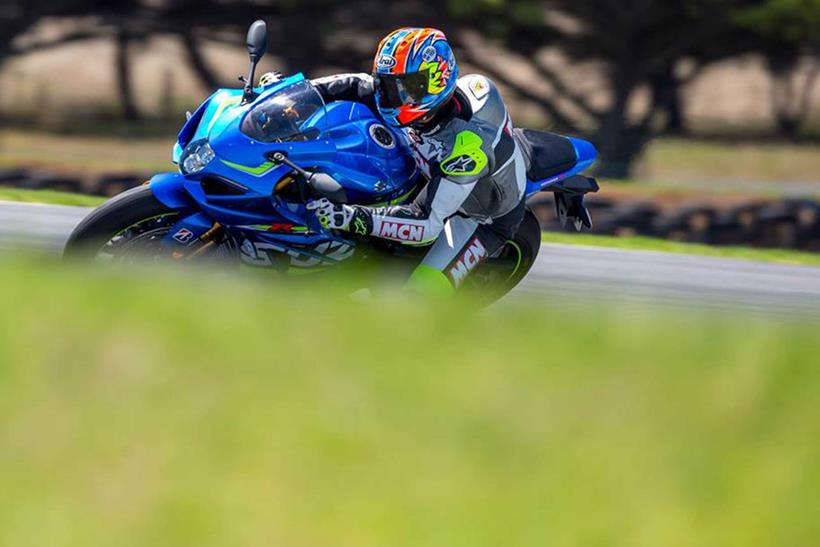
Unfortunately for many of us, the GSX-R1000 is another victim to EU emissions regulations, no longer available in the UK but still on sale in other regions for 2025.
Featuring a flexible and unique GSX-RR derived VVT engine, the latest generation of Suzuki’s superbike is excellent on the road and is better than it gets credit for.
It delivers as one of the best all rounder litre sportsbikes, with impeccable road manners and plenty in the tank if it finds itself on a racetrack. Available in this R version, you get plush feeling Showa suspension that’s set excellently from the showroom and can be easily stiffened for track usage.
- Highlights: Excellent handling and brakes / One of the friendliest Superbikes on the road / Unique VVT engine
- Specs: Engine size 999cc / Power 199 bhp / Weight 203kg / Seat height 825mm
- Price: Not available in the UK / Check price and availability in your location | buy from here
Review snapshot:
Back when it was launched in 2017, MCN road tester Michael Neeves rated the bike five stars.
“Superb electronics offer another exciting new chapter in the Suzuki GSX-R1000R’s story,” he said.
“It might need a bit of a heave to make high-speed direction changes and the standard tyres aren’t up to hard track work, but the new Suzuki is fast, fun, refined and thanks to its new electronics safer and easier to ride than ever.”
Read more in our in-depth 2017 Suzuki GSX-R1000R review.
In regions where the GSX-R is available, it remains unchanged for 2025, still an excellent performing road bike and with all the right ingredients to be potent on a racetrack.
Interested in this bike? Find Suzuki GSX-R1000R for sale.
It’s only the start of the year and we already have some great-looking superbikes to look forward to testing. There’s a raft of technology and aero designs incoming that are bolder than ever before. We’ll revisit this list once we’ve sampled them and add new bikes when their talents are known. For now, its time to browse our bikes for sale, to see if what current used superbikes can be snatched up for bargain prices.
